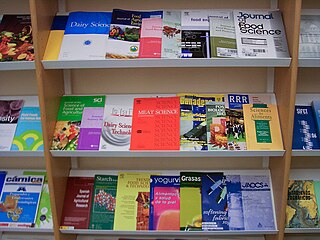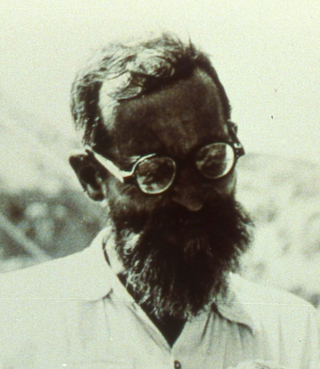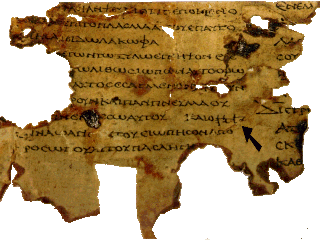The Essenes were a mystic Jewish sect during the Second Temple period that flourished from the 2nd century BCE to the 1st century CE.

The Dead Sea Scrolls are ancient Jewish and Hebrew religious manuscripts discovered between 1946 and 1956 at the Qumran Caves in what was then Mandatory Palestine, near Ein Feshkha in the West Bank, on the northern shore of the Dead Sea. Dating from the 3rd century BCE to the 1st century CE, the Dead Sea Scrolls are considered to be a keystone in the history of archaeology with great historical, religious, and linguistic significance because they include the oldest surviving manuscripts of entire books later included in the biblical canons, along with deuterocanonical and extra-biblical manuscripts which preserve evidence of the diversity of religious thought in late Second Temple Judaism. At the same time they cast new light on the emergence of Christianity and of Rabbinic Judaism. Most of the scrolls are held by Israel in the Shrine of the Book at the Israel Museum, but their ownership is disputed by Jordan due to the Qumran Caves' history: following the End of the British Mandate for Palestine in 1947, Jordan occupied the area in the 1948 Arab–Israeli War, and Israel captured both the area and several Scrolls from Jordan in the 1967 Six Day War. However, some of the scrolls are still in Jordan and are now displayed at The Jordan Museum in Amman. Ownership of the scrolls is also contested by the State of Palestine.

Qumran is an archaeological site in the West Bank managed by Israel's Qumran National Park. It is located on a dry marl plateau about 1.5 km (1 mi) from the northwestern shore of the Dead Sea, near the Israeli settlement and kibbutz of Kalya.

An academic journal or scholarly journal is a periodical publication in which scholarship relating to a particular academic discipline is published. Academic journals serve as permanent and transparent forums for the presentation, scrutiny, and discussion of research. They nearly universally require peer review or other scrutiny from contemporaries competent and established in their respective fields. Content typically takes the form of articles presenting original research, review articles, or book reviews. The purpose of an academic journal, according to Henry Oldenburg, is to give researchers a venue to "impart their knowledge to one another, and contribute what they can to the Grand design of improving natural knowledge, and perfecting all Philosophical Arts, and Sciences."
Scopus is Elsevier's abstract and citation database launched in 2004. Scopus covers nearly 36,377 titles from approximately 11,678 publishers, of which 34,346 are peer-reviewed journals in top-level subject fields: life sciences, social sciences, physical sciences and health sciences. It covers three types of sources: book series, journals, and trade journals. All journals covered in the Scopus database are reviewed for sufficiently high quality each year according to four types of numerical quality measure for each title; those are h-Index, CiteScore, SJR and SNIP. Searches in Scopus also incorporate searches of patent database Lexis-Nexis, albeit with a limited functionality.

John Marco Allegro was an English archaeologist and Dead Sea Scrolls scholar. He was a populariser of the Dead Sea Scrolls through his books and radio broadcasts. He was the editor of some of the most famous and controversial scrolls published, the pesharim. A number of Allegro's later books, including The Sacred Mushroom and the Cross, brought him both popular fame and notoriety, and also complicated his career.

Lawrence Harvey Schiffman is a professor at New York University ; he was formerly Vice-Provost of Undergraduate Education at Yeshiva University and Professor of Jewish Studies. He had previously been Chair of New York University's Skirball Department of Hebrew and Judaic Studies and served as the Ethel and Irvin A. Edelman Professor in Hebrew and Judaic Studies at New York University (NYU). He is currently the Judge Abraham Lieberman Professor of Hebrew and Judaic Studies at New York University and Director of the Global Institute for Advanced Research in Jewish Studies. He is a specialist in the Dead Sea Scrolls, Judaism in Late Antiquity, the history of Jewish law, and Talmudic literature.

Roland Guérin de Vaux was a French Dominican priest who led the Catholic team that initially worked on the Dead Sea Scrolls. He was the director of the Ecole Biblique, a French Catholic Theological School in East Jerusalem, and he was charged with overseeing research on the scrolls. His team excavated the ancient site of Khirbet Qumran (1951–1956) as well as several caves near Qumran northwest of the Dead Sea. The excavations were led by Ibrahim El-Assouli, caretaker of the Palestine Archaeological Museum, or what came to be known as the Rockefeller Museum in Jerusalem.
Emanuel Tov, is a Dutch–Israeli biblical scholar and linguist, emeritus J. L. Magnes Professor of Bible Studies in the Department of Bible at the Hebrew University of Jerusalem. He has been intimately involved with the Dead Sea Scrolls for many decades, and from 1991, he was appointed Editor-in-Chief of the Dead Sea Scrolls Publication Project.
The Rule of the Congregation (1QSa) is an appendix to one of the first seven Dead Sea Scrolls discovered in caves near the Qumran site in 1946. Three related sectarian documents were discovered in Qumran Cave 1: The Community Rule (1QS), The Rule of the Congregation (1QSa), and The Rule of the Blessing (1QSb). The Rule of the Congregation and the Rule of the Blessing were at first overlooked by researchers and considered a continuation of the much longer Community Rule.

4QMMT, also known as MMT, or the Halakhic Letter, is a reconstructed text from manuscripts that were part of the Dead Sea Scrolls discovered at Qumran in the Judean desert. The manuscripts that were used to reconstruct 4QMMT were found in Cave 4 at Qumran between the years 1953 and 1959. They were kept at the Palestinian Archaeological Museum, now known as the Rockefeller Museum in Jerusalem.
The Biblical Archaeology Society was established in 1974 by American lawyer Hershel Shanks, as a non-sectarian organisation that supports and promotes biblical archaeology. Its current publications include the Biblical Archaeology Review, whilst previously circulating the Bible Review (1985–2005) and Archaeology Odyssey (1998–2006). The Biblical Archaeology Society also publishes books about biblical archaeology aimed at a general readership. The Society has, for more than 30 years, run seminars and tours offering an opportunity to learn directly from world-renowned archaeologists and scholars. It also produces videos (DVD) and CDs on archaeology and biblical archaeology.

The Journal of Slavic Military Studies is a quarterly peer-reviewed academic journal that publishes articles relating to military affairs of Central and Eastern European Slavic nations, including their history and geopolitics, as well as book reviews. It is published by Routledge and the editor-in-chief is Martijn Lak. It was established in 1988 by David Glantz as The Journal of Soviet Military Studies, obtaining its current title in 1993. David Glantz was editor-in-chief from the founding of the journal until the end of 2017, with Alexander Hill briefly editing the journal from January 2018-March 2019.

Who Wrote the Dead Sea Scrolls? The Search for the Secret Of Qumran is a book by Norman Golb which intensifies the debate over the origins of the Dead Sea Scrolls, furthering the opinion that the scrolls were not the work of the Essenes, as other scholars claim, but written in Jerusalem and moved to Qumran in anticipation of the Roman siege in 70 AD.

Agricultural History is a quarterly peer reviewed academic journal published for the American Agricultural History Society by Duke University Press. Established in 1927, the journal publishes articles related to the history of agricultural and rural life in all geographies and amongst all people. The journal includes research, book and film reviews, and special features. Claire Strom served as editor from 2003 until the end of 2016. Albert Way succeeded Strom and is the current editor. The journal is currently accepting calls for proposals for a new journal editor who would start their term before December 31, 2024.

The Dead Sea Scrolls and the Christian myth is a 1979 book about the Dead Sea Scrolls, Essenes and early Christianity that proposes the non-existence of Jesus Christ. It was written by John Marco Allegro (1922–1988).

The Greek Minor Prophets Scroll from Nahal Hever is a Greek manuscript of a revision of the Septuagint dated to the 1st century CE. The manuscript is kept in the Rockefeller Museum in Jerusalem. It was first published by Dominique Barthélemy in 1963. The Rahlfs-Siglum is 943.

Journal of Classification is a peer-reviewed academic journal published by Springer Science+Business Media. It is the official journal of The Classification Society. The journal publishes three issues a year on topics in the field of classification, numerical taxonomy, multidimensional scaling and other ordination techniques, cluster analysis, tree structures and other network models. Each issue typically comprises four sections: articles, short notes and comments, software abstracts, and book reviews.
The Journal of Social Ontology is a peer-reviewed interdisciplinary academic journal with a focus on social ontology and collective intentionality. It is supported by International Social Ontology Society. The journal's editor-in-chief is Hans Bernhard Schmid.

Computers & Graphics is a peer-reviewed scientific journal that covers computer graphics and related subjects such as data visualization, human-computer interaction, virtual reality, and augmented reality. It was established in 1975 and originally published by Pergamon Press. It is now published by Elsevier which acquired Pergamon Press in 1991. Graphics and Visual Computing is an open access sister journal sharing the same editorial team and double-blind peer-review policies.














